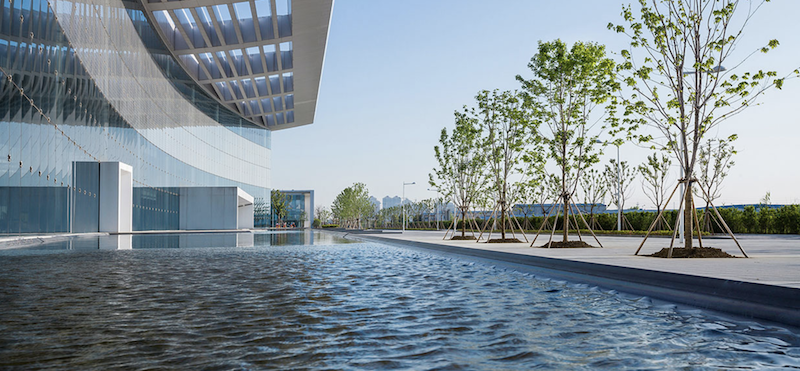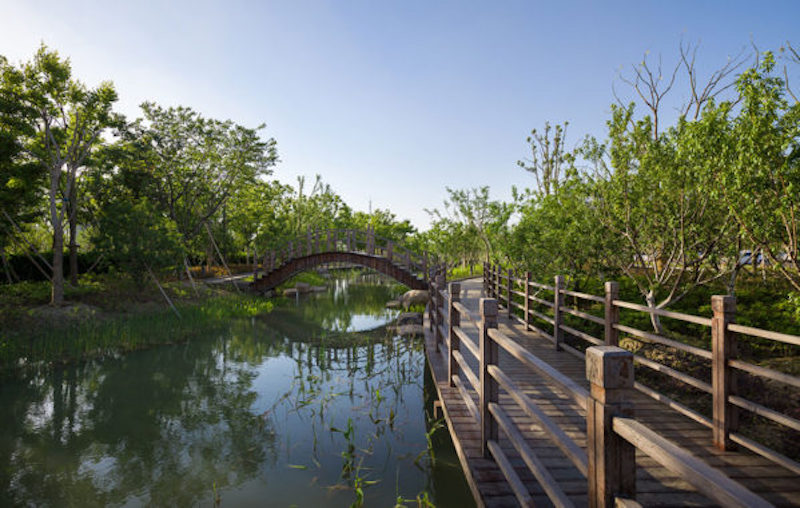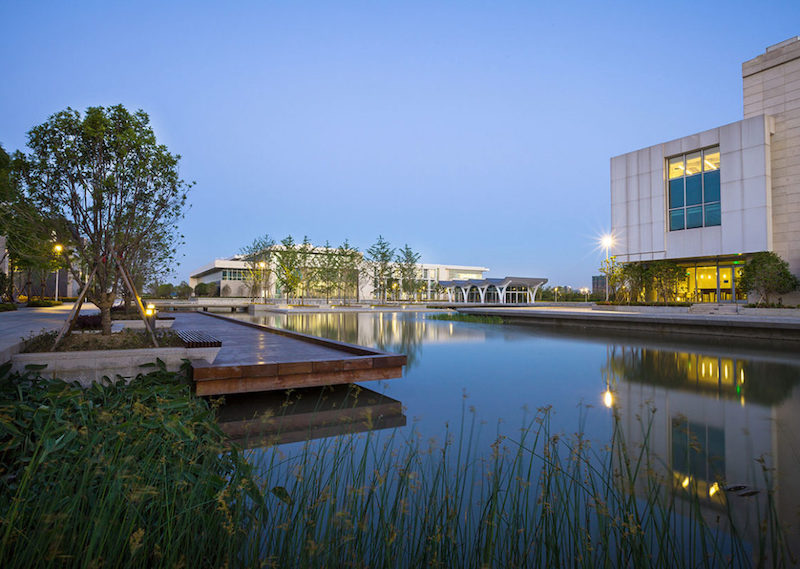As part of Duke University’s 200-acre global campus in Kunshan, China, the 30-acre first phase of Duke Kunshan University Campus includes five buildings that sit atop a manmade lake and are interconnected by low bridges and seasonal plazas.
The plazas are submerged underneath the water and are only revealed and usable during periods of low rainfall, which coincides with peak student attendance. A four-acre water ecosystem is the central landscape element of the new campus and includes a stormwater management system with point-source water filtration, roof gardens, rain gardens, living water gardens, greywater capture, and aquatic habitat creation.

"The entire water filtration system serves as an ecological education lab with a flowing water garden located at the end,” said Kevin Vogel, PE, Partner and Civil Engineer with LandDesign, in a release. "The design also addresses scalable energy alternatives to correspond with the American College & University President’s Climate Commitment for carbon neutrality.”
Primary gathering spaces feature movable benches, planters, and sculptures in order to accommodate large events, art installations, and social/learning space. Gensler is the project’s architect while LandDesign is handling landscape architecture and civil engineering duties.


Related Stories
| Oct 17, 2011
Clery Act report reveals community colleges lacking integrated mass notification systems
“Detailed Analysis of U.S. College and University Annual Clery Act Reports” study now available.
| Oct 14, 2011
University of New Mexico Science & Math Learning Center attains LEED for Schools Gold
Van H. Gilbert architects enhances sustainability credentials.
| Oct 12, 2011
Bulley & Andrews celebrates 120 years of construction
The family-owned and operated general contractor attributes this significant milestone to the strong foundation built decades ago on honesty, integrity, and service in construction.
| Sep 30, 2011
Design your own floor program
Program allows users to choose from a variety of flooring and line accent colors to create unique floor designs to complement any athletic facility.
| Sep 23, 2011
Okanagan College sets sights on Living Buildings Challenge
The Living Building Challenge requires projects to meet a stringent list of qualifications, including net-zero energy and water consumption, and address critical environmental, social and economic factors.
| Sep 14, 2011
Research shows large gap in safety focus
82% of public, private and 2-year specialized colleges and universities believe they are not very effective at managing safe and secure openings or identities.
| Sep 7, 2011
KSS Architects wins AIA NJ design award
The project was one of three to win the award in the category of Architectural/Non-Residential.
| May 18, 2011
Major Trends in University Residence Halls
They’re not ‘dorms’ anymore. Today’s collegiate housing facilities are lively, state-of-the-art, and green—and a growing sector for Building Teams to explore.
| May 18, 2011
Raphael Viñoly’s serpentine-shaped building snakes up San Francisco hillside
The hillside location for the Ray and Dagmar Dolby Regeneration Medicine building at the University of California, San Francisco, presented a challenge to the Building Team of Raphael Viñoly, SmithGroup, DPR Construction, and Forell/Elsesser Engineers. The 660-foot-long serpentine-shaped building sits on a structural framework 40 to 70 feet off the ground to accommodate the hillside’s steep 60-degree slope.
















